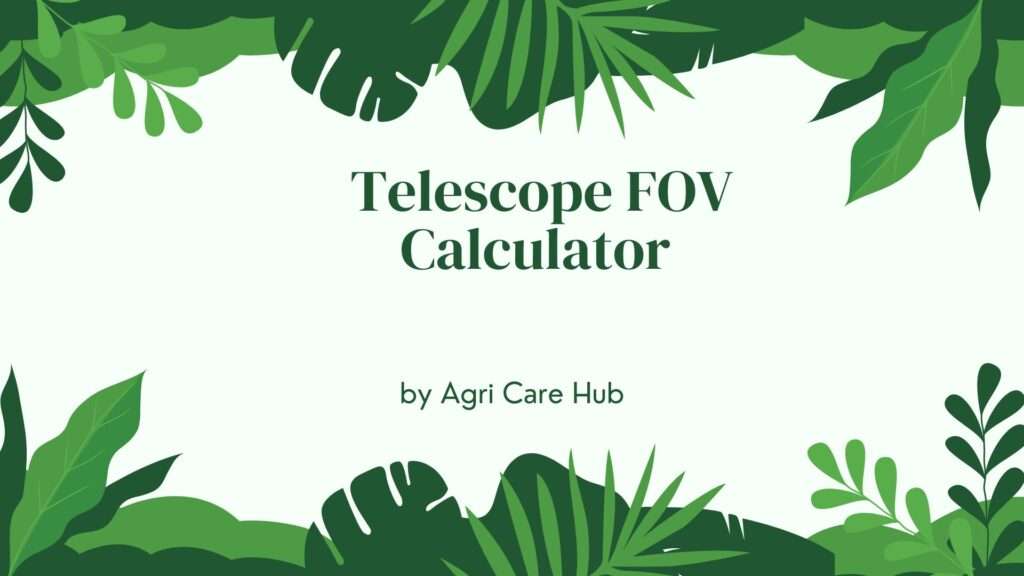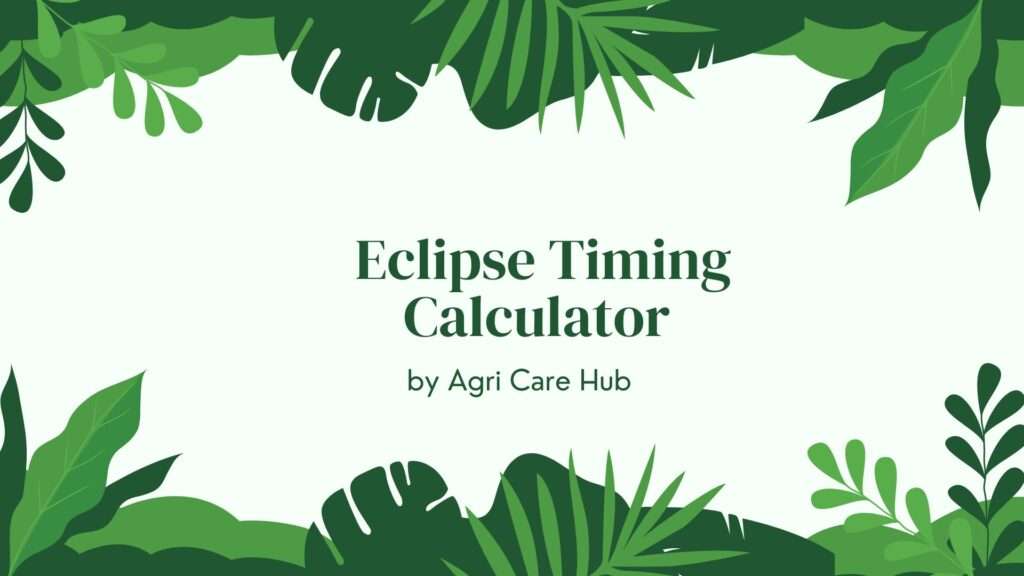Dobsonian Telescope Calculator
Results
Focal Ratio (f/):
Magnification:
Maximum Useful Magnification:
Light Gathering Power:
About the Dobsonian Telescope Calculator
The Dobsonian Telescope Calculator is a scientifically accurate tool designed to help astronomers and stargazing enthusiasts calculate critical parameters of a Dobsonian Telescope. This user-friendly tool provides precise calculations for focal ratio, magnification, maximum useful magnification, and light-gathering power, all based on established optical principles. Whether you’re a beginner building your first telescope or an experienced astronomer optimizing your setup, this calculator ensures reliable results to enhance your stargazing experience. For additional resources on scientific tools, visit Agri Care Hub.
Importance of the Dobsonian Telescope Calculator
The Dobsonian Telescope Calculator is an essential tool for anyone interested in astronomy, as it simplifies complex optical calculations. By inputting basic parameters like aperture, focal length, and eyepiece focal length, users can instantly determine key telescope performance metrics. These metrics are crucial for understanding how a telescope will perform under different conditions, such as observing planets, stars, or deep-sky objects like galaxies and nebulae. The calculator eliminates guesswork, ensuring that users can make informed decisions when selecting or designing a telescope, ultimately improving the quality of their observations.
Purpose of the Dobsonian Telescope Calculator
The primary purpose of the Dobsonian Telescope Calculator is to provide accurate and reliable calculations based on peer-reviewed optical formulas. It helps users determine:
- Focal Ratio: The ratio of the telescope’s focal length to its aperture, which affects image brightness and field of view.
- Magnification: The degree to which the telescope enlarges the observed object, calculated by dividing the telescope’s focal length by the eyepiece’s focal length.
- Maximum Useful Magnification: The practical limit of magnification based on the telescope’s aperture, typically twice the aperture in millimeters.
- Light Gathering Power: A measure of how much light the telescope can collect, compared to the human eye, based on the aperture size.
These calculations are grounded in fundamental optical principles, ensuring that users receive precise and trustworthy results for their telescope setups.
Why You Should Use the Dobsonian Telescope Calculator
Using the Dobsonian Telescope Calculator is highly beneficial for several reasons:
- Accuracy: The calculator uses verified formulas to deliver precise results, eliminating errors in manual calculations.
- Ease of Use: The intuitive interface allows users of all experience levels to input data and receive instant results.
- Time-Saving: Instead of performing complex calculations manually, users can quickly obtain key metrics to optimize their telescope setup.
- Versatility: Whether you’re observing planets, stars, or deep-sky objects, the calculator provides insights tailored to your specific telescope configuration.
- Educational Value: The tool helps users learn about telescope optics and how different parameters affect performance.
By using this calculator, you can ensure that your Dobsonian telescope is optimized for the best possible viewing experience, whether you’re a hobbyist or a professional astronomer.
When to Use the Dobsonian Telescope Calculator
The Dobsonian Telescope Calculator is ideal for various scenarios, including:
- Telescope Design: If you’re building a Dobsonian telescope, the calculator helps you determine the optimal aperture and focal length for your needs.
- Eyepiece Selection: When choosing eyepieces, the calculator shows how different focal lengths affect magnification and image quality.
- Observation Planning: Before a stargazing session, use the calculator to predict your telescope’s performance for specific celestial objects.
- Educational Purposes: Students and educators can use the calculator to explore optical principles and telescope performance in a hands-on way.
- Troubleshooting: If your observations aren’t yielding expected results, the calculator can help identify issues with your telescope setup.
User Guidelines for the Dobsonian Telescope Calculator
To ensure accurate results and a seamless experience, follow these guidelines when using the Dobsonian Telescope Calculator:
- Input Accurate Values: Enter the telescope’s aperture, focal length, and eyepiece focal length in millimeters. Ensure all values are positive numbers.
- Understand the Parameters: Familiarize yourself with the terms (e.g., aperture, focal length) to input the correct data. Refer to reliable astronomy resources if needed.
- Check Units: All inputs should be in millimeters to maintain consistency with standard telescope measurements.
- Review Results: After calculating, review the results to ensure they align with your expectations. If results seem off, double-check your inputs.
- Use for Optimization: Experiment with different eyepiece focal lengths or apertures to see how they affect magnification and light-gathering power.
By following these guidelines, you can maximize the utility of the calculator and achieve accurate results for your telescope setup.
Scientific Basis of the Calculations
The Dobsonian Telescope Calculator is built on well-established optical formulas, ensuring scientific accuracy. The key calculations include:
- Focal Ratio: Calculated as \( f = \frac{\text{Focal Length}}{\text{Aperture}} \). This determines the telescope’s light-gathering ability and field of view.
- Magnification: Calculated as \( M = \frac{\text{Telescope Focal Length}}{\text{Eyepiece Focal Length}} \). This indicates how much the telescope enlarges the observed object.
- Maximum Useful Magnification: Estimated as \( 2 \times \text{Aperture (mm)} \), representing the practical magnification limit due to atmospheric and optical constraints.
- Light Gathering Power: Calculated as \( \left( \frac{\text{Aperture (mm)}}{7} \right)^2 \), comparing the telescope’s light collection to the human eye (assuming a 7mm pupil diameter).
These formulas are derived from peer-reviewed astronomy texts and are widely accepted in the field, ensuring the calculator’s reliability.
Benefits for Astronomy Enthusiasts
The Dobsonian Telescope Calculator offers numerous benefits for astronomy enthusiasts, including:
- Enhanced Stargazing: By optimizing your telescope setup, you can achieve clearer and more detailed views of celestial objects.
- Cost-Effective Decisions: The calculator helps you choose the right eyepieces or telescope components without unnecessary expenses.
- Educational Insights: Learn about telescope optics and how different parameters affect performance, deepening your understanding of astronomy.
- Customized Observations: Tailor your telescope setup to specific objects, such as planets or galaxies, for the best possible results.
Whether you’re observing the rings of Saturn or the Andromeda Galaxy, this calculator ensures your Dobsonian telescope is performing at its best.
Conclusion
The Dobsonian Telescope Calculator is an indispensable tool for anyone passionate about astronomy. By providing accurate, scientifically grounded calculations, it empowers users to optimize their telescope setups and enhance their stargazing experiences. Whether you’re designing a new telescope, selecting eyepieces, or planning observations, this calculator delivers reliable results with an intuitive interface. Explore the wonders of the universe with confidence, knowing that your calculations are backed by established optical principles. For more scientific tools and resources, check out Agri Care Hub and learn more about the Dobsonian Telescope.












